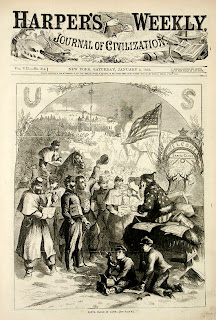I got this story from the net and it is very interesting to know who was behind the image of Santa Claus.
Thomas Nast (1840-1902), was the man who first drew the popular image of Santa Claus as portrayed in many stories for the past generations of man on earth.
The first illustration appeared in the January 3, 1863 edition of Harper’s Weekly, and shows Santa Claus visiting a Civil War Camp. In the background of the illustration, a sign can be seen that reads “Welcome Santa Claus.”
The illustration shows Santa handing out gifts to children and soldiers. One soldier receives a new pair of socks, which would no doubt be one of the most wonderful things a soldier of the time could receive.
Santa is pictured sitting on his sleigh, which is being pulled by reindeer. Santa is pictured with a long white beard, a furry hat, collar and belt. We can see that many of our modern perceptions of Santa Claus are demonstrated in the 141 year old print.
Thomas Nast, the man who, along with Clement Moore, created our current image of Santa Claus, was featured in the New Yorker magazine (December 15, 1997).
Here is an excerpt (pp. 84-102) from the article by Adam Gopnik.
“Like so many of the great makers of nineteenth-century American art, Nast was a foreigner. He was born in 1840 in the little German town of Landau . His father was a musician, who played trombone in a military band. He was also a liberal of the great generation of 1848 and, with his family, he fled reaction to come to New York . Nast was a pure product of the German-American culture that in many ways dominated New York then, and still survives, in fragments, up around East Eighty-sixth Street . It was a culture built around sacredness of concert music, particularly Beethoven (Nast’s father was a member of the Philharmonic Society, and, odd as it seems now, after a hundred years of darker views of Germanness, around a sense of comfort that eventually produced the American cult of Christmas. In Nast’s generation, it was the Germans who brought warmth and music to a parched and tinny American Protestantism.
“More important, Nast remained a German artist in the same manner that Audubon remained French. He had a distinctly German combination of liberal feeling and prim, self-righteous Protestant offense at excess; it is not always easy to separate the anti-corruption from the anti-Catholic feeling in his mature cartooning.”
Below is Nast’s most famous drawing, “Merry Old Santa Claus,” from Harper’s Weekly, January 1, 1881



